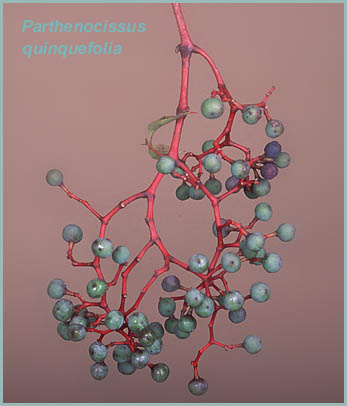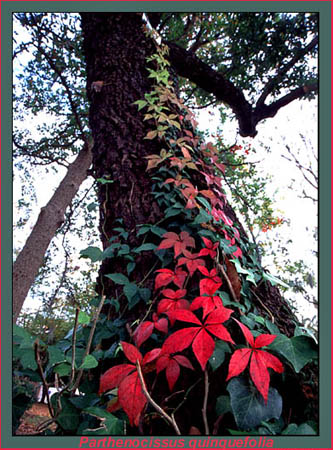In the Vines of Mistaken Identify, we’re exploring the different types of vines commonly called “invasive” around Nassau County. Rather, in fact, these vines are not invasive and many of them are native too, which provides amazing benefits to our ecosystem and environment. This blog discusses the Virginia Creeper.
It’s Important Value
Virginia Creeper (Parthenocissus quinquefolia) is one of our vines of mistaken identity. This vine seemingly pops up throughout our natural areas and many times people confuse it with Poison Ivy. In fact, when utilized properly, Virginia Creeper can be a beautiful ornamental vine for a landscape because it can easily be trained to trellises and provides beautiful fall color. Like all our native vines, Virginia Creeper provides shelter and food sources for scores of wildlife throughout the state, especially birds.
The Concern
Virginia Creeper is an aggressive grower and pops up everywhere – which causes people to refer to it as invasive, but it is important to note that no native plant can be invasive. Within our ornamental landscapes and agricultural production, it can be considered a nuisance because it pops up in our shrubs, trees, groundcovers, etc. In situations within our landscapes, Virginia Creeper can cover, smother, and overwhelm some of our smaller landscape plant material.
Just be thankful these creepers don’t explode (get my reference?)
Recommendation
Complete eradication of this vine is very difficult. Hand-pulling the weeds when they are young is helpful but isn’t fully effective as result of the vine’s extensive root system. If hand removing this vine is already part of your landscape maintenance – perfect. Herbicide treatment is possible, but will also take multiple applications for complete control. Building hand-pulling Virginia Creeper can help keep the population minimal and manageable for homeowners, so it will not proliferate excessively.
Identification
Virginia Creeper is easily identifiable, especially compared to Poison Ivy. It has compound leaves. A compound leaf seemingly has multiple leaflets on one leaf. Specifically, Virginia Creeper has a palmately compound leaf – specifically having five leaflets on its leaves whereas poison ivy has three leaflets.
- Size/Form: The woody vines grow upwards into the canopies of trees, reaching heights of 60 – 100 feet long. Branches are alternately arranged.
- Bark: Smooth on younger stems. Older stems have tight, exfoliating bark.
- Leaf: Deciduous, alternate, cordate (heart-shaped), leaf margin is dentate (bumps)
- Fruit: Green, black, purple, yellow-green (scuppernong)



For More Information
Follow the Vines of Mistaken Identity Blog Series
Upcoming Horticulture Programs
 1
1
